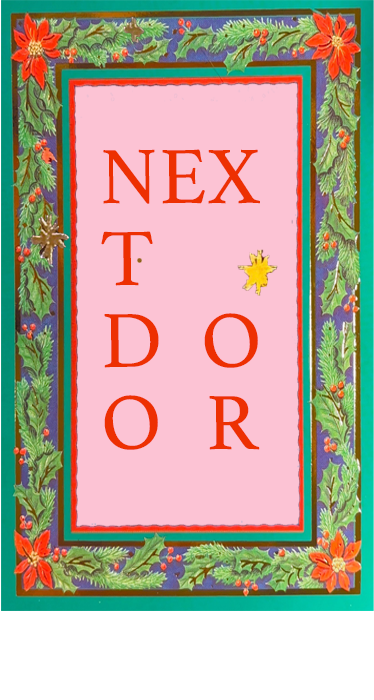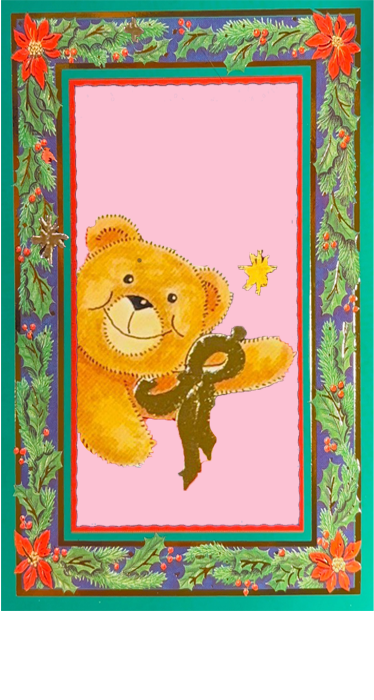BEHIND EVERY DOOR
WITH IMOGEN CORBETT
WITH IMOGEN CORBETT
Knock Knock?
Who's there?
Amelia McLeish from Nextdoor,
here to interview artist Imogen Corbett.
here to interview artist Imogen Corbett.
Hello! Come on in...
Welcome to our very first Behind Every Door Interview - a series which aims to provide insight into the minds of some of our favourite emerging Brisbane-based artists.
Imogen Corbett's paintings are concerned with people, place and surrealism in creating individual narratives. These narratives explore alternate or unconscious recollections of her lived experiences, which mix landscape, juxtaposition of scale and characters in visualising surreal scenarios. Exploration of the natural world and man made landscapes are recurring themes, and personal symbolism is used in capturing cliffhanger moments. Each narrative is underlaid with a feeling of fantasy or unease, and it is interesting to see which the viewer will identify with. These stories are told through oil paint and are meticulously painted in thin layers; gradually building in detail and visual clarity.
Imogen Corbett's paintings are concerned with people, place and surrealism in creating individual narratives. These narratives explore alternate or unconscious recollections of her lived experiences, which mix landscape, juxtaposition of scale and characters in visualising surreal scenarios. Exploration of the natural world and man made landscapes are recurring themes, and personal symbolism is used in capturing cliffhanger moments. Each narrative is underlaid with a feeling of fantasy or unease, and it is interesting to see which the viewer will identify with. These stories are told through oil paint and are meticulously painted in thin layers; gradually building in detail and visual clarity.
A : When did you know that art was your thing? Was there a key moment?
I : I don’t think there was a particularly defining moment, but a lot of little moments that built up my confidence as an artist. I was very shy as a kid [as many arty kids are] and art was a way to express myself when words failed me. I was always encouraged to pursue art which gave me a feeling of confidence and security and I was always known as ‘the art kid’ growing up. I honestly can’t remember when art wasn’t a part of my identity!
A : Your art blends surrealism and realism, whenever I look at your paintings I’m constantly shifting between the familiar and the abnormal. Are you able to go into depth about how you developed this form?
I : Similar to a lot of emerging artists, my practice originated strictly from realism. Up until recently, my ‘thing’ was portraiture, and I think this stemmed from a fascination with understanding other people. But recently, I have been fascinated with understanding myself and my relationship with the world around me. At the moment, I have been using surrealism as a vehicle to express some of the absurdities of the world I live in. I think this switch in style is inspired by my move from New Zealand to Australia, as I often find myself marveling at the differences in lifestyle. My life in Dunedin was quiet and close to nature, while life in Brisbane feels fast-paced and industrial. I like to express my experiences within the context of the real world, by putting surreal characters and objects into recognisable, real environments. Both lifestyles are equally beautiful, but there is a surrealism in the two coexisting in one space.
Untitled 3, 2020. Oil on canvas.
A: Bees appear quite a bit in your work, what is your fascination with them?
I : I get asked about the bees a lot! I think including them was at first, an automatic decision, but they have morphed into a fixture in my work. I use a lot of personal symbolism in my paintings and the bees feel like a familiar friend. I guess I’ve always seen them as positive creatures, [particularly bumble bees] they’re clumsy and cute, and a little misunderstood since they can sting you in self defense. To me, bees feel like the perfect symbol for bridging the gap between the real and surreal world, as they’re not inherently good or bad creatures, and whether they are or not varies with the opinions of the viewers, which can completely change the feeling of the painting [and I really like this ambiguity].
A: How do you feel COVID-19 has affected your work? How have you been managing with the restrictions?
I : If anything, the pandemic has reaffirmed my interest in surrealism, since we’re living in such a surreal time. I think the feeling of uncertainty has made me reevaluate my work, it makes me wonder if I should be capturing the undercurrent of dread that a lot of people are feeling, or trying to inspire positivity. Either way, I feel obliged to document these universal feelings in my art. I’m currently studying fine arts at QCA and they have been conducting online teaching for the past 5+ weeks. The course is very physical so I’ve had to adapt to working from home. But I’m lucky enough to have instructors who are trying their best to make classes and assessments as accessible as possible and are very understanding. In terms of the restrictions, I have been impacted by the sudden interest in arts and crafts, as it’s becoming harder and harder to find canvases and paint!
Untitled, 2020. Oil on canvas
A : Have you considered other applications of your practice outside of painting? If not, what is it about painting that you find so captivating?
I : I think painting will always be my main professional focus. I love the way I can translate the ideas in my head so clearly in paint and it’s become such an important part of the way I communicate. But I do love working in other mediums for the creative outlets they give me, it’s one of the main reasons I’m studying fine art. In the future I would love to have a play with video and installation art.
A: What or who has influenced your visual arts practice?
I : I’m a huge art history geek and I’ve always been inspired by Renaissance and Baroque paintings. I have a soft spot for paintings that use chiaroscuro lighting and vibrantly coloured drapery. I love Caravaggio’s dark and dramatic biblical scenes. His painting The taking of Christ was the first painting that I’ve seen in person that awed me into silence [in fact, I may shed a tear or two...]. Recently, I’ve been enjoying learning about modern art and some of my favourite artists from this period are Francis Bacon, Yayoi Kusama and Eva Hesse [just to name a few]. A couple of contemporary artists I have been following recently are Joel Rea, Jasmine Middlebrook and Ania Hobson. I love finding artists who have similar interests in portraiture or surrealism to me.
Thanks to Imogen Corbett.
Follow our ongoing artist interview series 'Behind Every Door'.
Follow our ongoing artist interview series 'Behind Every Door'.
FIND OUT MORE ABOUT IMOGEN BELOW!

